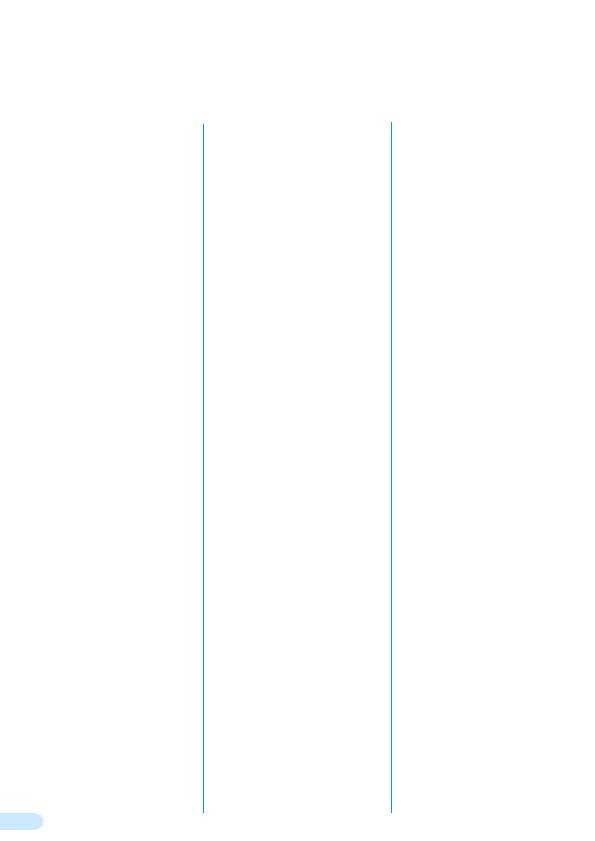
How similar are pharmaceutical preparations with
different therapeutic indications?
The Community trade mark law perspective
Verena von Bomhard and David E.F. Slopek, Hogan Lovells (Alicante) S.L. & Cia., Spain
Introduction
The similarity of pharmaceutical
preparations has always played a crucial
role in the assessment of likelihood of
confusion between trade marks for such
products. However, in recent times, there
seems to be a trend at the Office for
Harmonization in the Internal Market
(OHIM) whereby different therapeutic
indications lead to likelihood of confusion
being denied. Given the fundamental
importance of this aspect, the absence of
clear guidance and inconsistent EU case
law as to the impact of therapeutic
indications of opposing marks on the
assessment of similarity of goods give rise
to concern.
General criteria
In the Canon judgment, the European
Court of Justice (ECJ) established as
relevant criteria for assessing the similarity
of goods, "inter alia, their nature, their
end users [should read `intended
purpose'] and their method of use and
whether they are in competition with
each other or are complementary"
(judgment of 29 September 1998, C-
39/97, para. 23). Later case law referred
also to the distribution channels, the
relevant public and the usual origin of the
products under comparison. The decisive
test question is, generally, whether the
relevant consumer, assuming identical
marks, would reasonably believe that the
products come from the same commercial
source. This also follows from the Canon
judgment, where the ECJ emphasized the
origin function of trade marks and held
that "the risk that the public might believe
that the goods or services in question
come from the same undertaking (...)
constitutes a likelihood of confusion"
(ibid., para 29).
The case of pharmaceutical trade
marks
In applying these criteria to
pharmaceutical trade marks, the General
Court (GC) has adopted two
fundamentally opposed approaches.
On the one hand, pharmaceutical
preparations for different therapeutic
indications have been found to be similar
to a normal degree. The judgment of 16
June 2010 (T-487/08 [KRENOSIN/
KREMEZIN]) is a good example. The
goods under comparison were
pharmaceutical preparations "for use in
the treatment of renal disease, liver
disease, diabetes mellitus and Crohn's
disease (...) and none (...) being for use in
the treatment of heart conditions "on the
one hand and" for the treatment of the
heart" on the other hand. The GC found
that these goods were of the same kind
(pharmaceutical products), directed at the
same consumers (health professionals and
patients) and traded via the same channels
of distribution (health centres and
chemist's shops). These similarities
outweighed the only difference, which was
the respective therapeutic indication. The
significant differences between the
therapeutic indications in that case only
meant that the goods were not regarded
as highly similar; however, a normal
degree of similarity was found to exist
(ibid, para. 75 et seq.).
On the other hand, in other judgments,
stricter criteria have been applied. The
leading case is the Tolposan judgment (15
December 2010, T-331/09
[TONOPAN/TOLPOSAN]). In this case
the GC held that there was only a low
degree of similarity between analgesics for
soothing pain and muscle relaxants.
Whilst the Court admitted that most of
the criteria which render goods similar
were fulfilled, it went on to explain that
these similarities were due to the fact that
both goods were medicines, a broad
category that included goods that may be
different. It was, therefore, "necessary to
have regard to other factors, in order to
properly assess the similarity between the
medicines. These factors are, in particular,
whether these medicines are in
competition with each other or
complementary, as well as their purpose
and their specific intended use (treatment
of specific health problems). In taking
these factors into account, a medicine's
therapeutic indication is of decisive
importance" (ibid, para. 36).
Where the therapeutic indications are
different, the products under comparison
will hardly be in competition. Obviously, a
medicine for one disease is not
interchangeable with a medicine for
another disease. Therefore,
pharmaceutical preparations for the cure
of different diseases can only be similar to
a more than low degree if they are
complementary. Unfortunately, however,
the case-law on the complementarity of
pharmaceutical preparations is also
inconsistent.
Comment
The Tolposan decision plays an important
role in practice. OHIM's Boards of Appeal
refer to it on a regular basis in order to
establish that goods are similar to a low
degree only (e.g. BoA, decision of 14
January 2013 in Care R 1149/2012-1
[BESIRO/BETIGO], para. 26), to then
deny likelihood of confusion.
However, the judgment is problematic for
a couple of reasons. From a policy
perspective, it reduces the scope of
protection of pharmaceutical trade marks.
From a legal perspective, there are
further aspects which have to be taken
into account when relying on the
Tolposan judgment. The decision is
inconsistent with the GC's approach
otherwise as summarized above. This
leads to legal uncertainty for owners of
pharmaceutical trade marks. It is also
inconsistent with other case law where
the GC compared pharmaceutical
preparations and other goods. If there is
an average degree of similarity between
pharmaceutical preparations and dietetic
preparations for medicinal purposes (GC,
judgment of 15 December 2009, T-412/08
[TriBion Harmonis (fig.)/Trubion], para.
32]), this assessment must apply, a
fortiori, to different medicines. Finally, the
Tolposan judgment overestimates the
importance of the therapeutic indication
and could, therefore, be regarded as being
in conflict with case law of the ECJ. As set
out in OHIM's Manual Concerning
Opposition (Identity and Likelihood of
Confusion, Part 2.2, page 43) "several, if
not all criteria for similarity are usually
met: [specific pharmaceutical
preparations] share the same nature
because they are specific chemical
products; their purpose is, broadly speak-
ing, healing and/or curing; they are sold in
the same places, namely, pharmacies; and
they come from the same source, which is
the pharmaceutical industry."
6
continued on next page

